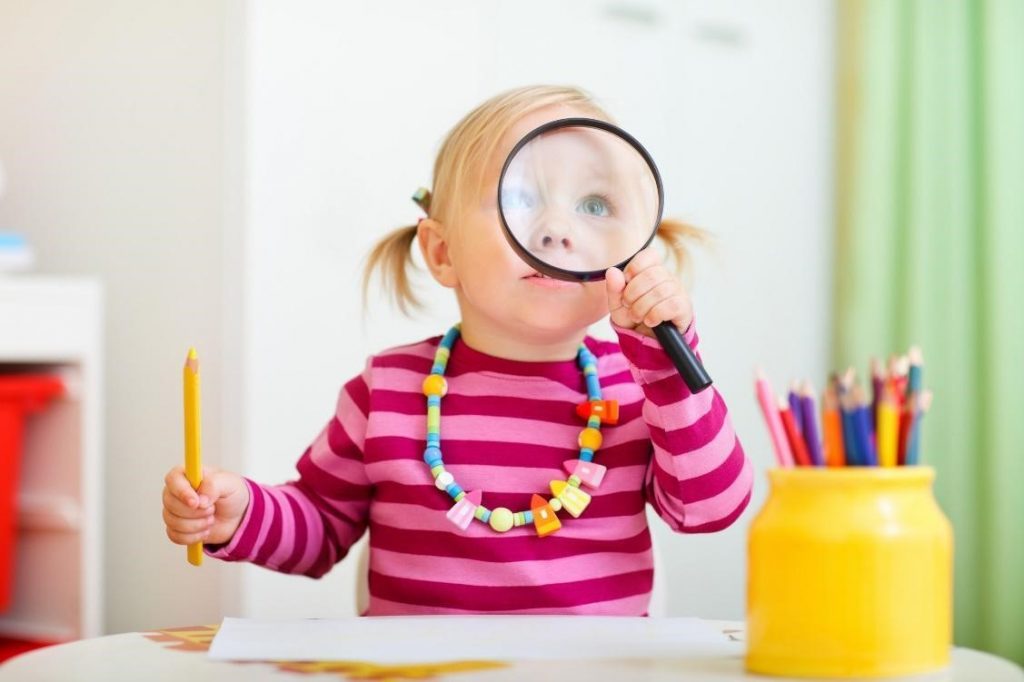Help your child learn about the world around them by nurturing their sense of curiosity
Children are naturally curious and having adults that encourage their curiosity results in raising individuals who are independent, confident, courageous, and intelligent. Young children learn by exploring the world around them, experimenting, and pushing boundaries. This can result in messes, misbehavior, and a lot of frustration for parents, but don’t forget the greater purpose, which is helping your child learn their place as a person and in the world around them.
Introduce safe, healthy, and manageable activities to encourage your child’s curiosity with the following ideas.
The call of curiosity
Children will always seek out new opportunities to learn and explore. As a parent, your job isn’t necessarily to push them to seek these things out, but to set up safe and fun activities that will allow them to expand their boundaries.
Kids are curious from birth and beyond. A newborn follows sounds and objects with their eyes, an 8-month-old will shake a rattle or put a toy in their mouth, a toddler will find a way to climb to reach a forbidden item, and a 2-year-old will explore occupations through pretend play.
You can help encourage this natural inclination by doing the following:
- Encourage interests: Following your child’s lead serves as the ideal road map of when and how to start. Toddlers can become hyper-focused on an item or profession. If they love trains, center activities and outings around train-related crafts and toys, meeting a conductor, taking a train ride, and learning about transportation. They will engage happily and have ideas or questions that will increase their knowledge if you start with a spark that catches their interest.
- Demonstrate enthusiasm: Young children look to the adults they respect to develop ideas on how admirable people act. Make sure they see that you are curious and invested in the world around you. If you have a passion or a passing interest, involve them in that, or at least make them aware of its existence and how you pursue it. It’s good for you and for them – you get to satisfy your own curiosity while acting as a positive role model.
- Ask and answer questions: Fielding your millionth “why” question of the day doesn’t always feel like a valuable opportunity for growth. Take a deep breath, consider the intent and potential outcome, and answer even the most ridiculous inquiry with respect, thoughtfulness, and patience. Also, encourage a two-way dialog by asking open-ended questions. Ask your child for their opinion on a wide range of subjects and appreciate their contributions to your conversations.
- Plan less: In today’s busy world, it’s easy to overschedule and over the plan. With an abundance of organized activities and technological toys, the parenting pressure to provide “the best” is real. But, when it comes to curiosity, basic is often best.
Time and open-ended play are easy and affordable options and can inspire children to entertain themselves. Give children a safe space, and a blank canvas for their own creations – cardboard boxes, blocks, art supplies, and pots and pans can take on a new purpose through the eyes of a child.
Children are natural-born thrill-seekers, navigators, and scientists. They’re ready to study people, places, cause, and effect, and are ready to adapt and evolve based on their findings. A parent’s job is to keep their child safe and to encourage their excitement about the world. Help your child explore their curiosity by being patient and accommodating of their ongoing efforts and interests.
The Virginia Infant & Toddler Specialist Network helps improve the quality of care for infants and toddlers through extensive resources, services, and education for caregivers. Learn more about how we can help you improve the standard of care.




